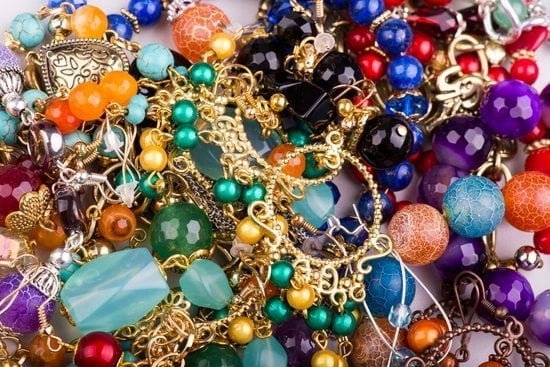Introduction
Old jewelry typically consists of delicate precious metals and stones, such as gold, silver, and gemstones. These require special care when undertaking any cleaning process to preserve the charm, beauty, and overall quality of the piece. The following guide will outline the best practices for cleaning antique jewelry safely and effectively.
What You Need to Clean Old Jewelry
What You Need to Clean Old Jewelry:
• Mild soap
• Soft-bristled toothbrush
• Gentle jewelry cleaner
• Polishing cloths
• Ultra-soft cotton swabs
• Magnifying glasses
• Aluminum foil
• Boiling water
• Glass bowl or cup
• Soft dish cloth
How to Prepare Old Jewelry for Cleaning
Before beginning the cleaning process, it is important to thoroughly inspect your old jewelry for signs of wear and tear. Look for weak or broken clasps, missing stones or gems, and other damage that could become worse with cleaning. In addition, check the surfaces of the piece for tarnished metal or buildup from oils, lotions, and other substances. Make sure all stones are tightly secured and any weak components, such as thinning chains, are carefully examined before proceeding with the cleaning process. If you have any doubts about a particular piece of jewelry returning to its original condition after cleaning then consult an expert.
Steps for Cleaning Old Jewelry
For cleaning old jewelry, it is important to select the right type of jewelry cleaner based on the type of metal and stone used. If you are unsure what kind of metal or stone is present in your piece, inspect it closely for hallmarks or markings that could indicate its origin. Once you know the makeup of your jewelry item, choose a cleaning agent formulated specifically for that material.
To clean gold jewelry, use warm water with a few drops of mild dishwashing soap added to it. Swish your jewelry around in this mixture for about 10 minutes and then rinse with plain warm water and dry with a soft cloth. Tarnish can sometimes be removed from gold by using lemon juice or white vinegar mixed with flour to form a paste that can be applied directly to the item and then buffed off with a cloth.
For silver, use a silver polishing cloth which has been treated with special silver cleaner solution to gently rub away tarnish spots on all rounded surfaces like stones as well as flat ones like chains. Jewelry dips are available for more stubborn tarnished areas but should not be used regularly on fine silver pieces because they may cause damage. Soaking your silver in warm water add a few drops of mild dishwashing soap is also an effective way to clean it and remove dirt buildup at the same time. Make sure it is thoroughly dried afterward so the metal doesn’t oxidize further while stored away. Finally, store your cleaned silver items in an airtight container lined with either tarnish-preventing paper or fabric to keep them looking shiny and new!
For other metals like brass, bronze and copper use specialized cleaners made specifically for those metals along with extra fine steel wool if needed for specific areas that have lots of dirt buildup or have turned darker from oxidation over the years. These metals should also not be stored sealed away without proper ventilation due to potential rusting issues
Caring for Old Jewelry
To prevent jewelry from tangling and avoid abrasive jewelry boxes, first use a soft cloth or cotton swab to gently wipe away any dirt or dust that has accumulated. These materials will not cause any damage to the delicate metals of your jewelry. It may also be helpful to consider using small bags or divided compartments to store each piece separately. Alternatively, you may use rolls of paper towel or bubble wrap to separate different pieces and keep them from touching. Additionally, storing it in an airtight container can help protect against tarnish and discoloration as well as moisture which encourages metal oxidation. Trying out an anti-tarnish tab specifically designed for keeping silver chains free from tarnish and build up can also be helpful in addition to keeping it out of direct sunlight for extended periods of time.
Conclusion
After learning how to clean old jewelry, customers may wish to learn more about how to properly care for their jewelry. Cleaning and caring for antique and vintage pieces requires special attention because they are often very delicate, so it’s important to know how to avoid damaging them while cleaning. Some resources that may provide helpful information include articles on jewelry care from trusted sources, such as professional jewelers or established jewelry websites. Additionally, many local jewelers offer repair services that can help restore or preserve pieces of antique and vintage jewelry. Contacting a local jeweler for advice before attempting a DIY cleaning project is highly recommended in order to ensure the best outcome.

Welcome to my jewelry blog! My name is Sarah and I am the owner of this blog.
I love making jewelry and sharing my creations with others.
So whether you’re someone who loves wearing jewelry yourself or simply enjoys learning about it, be sure to check out my blog for insightful posts on everything related to this exciting topic!





